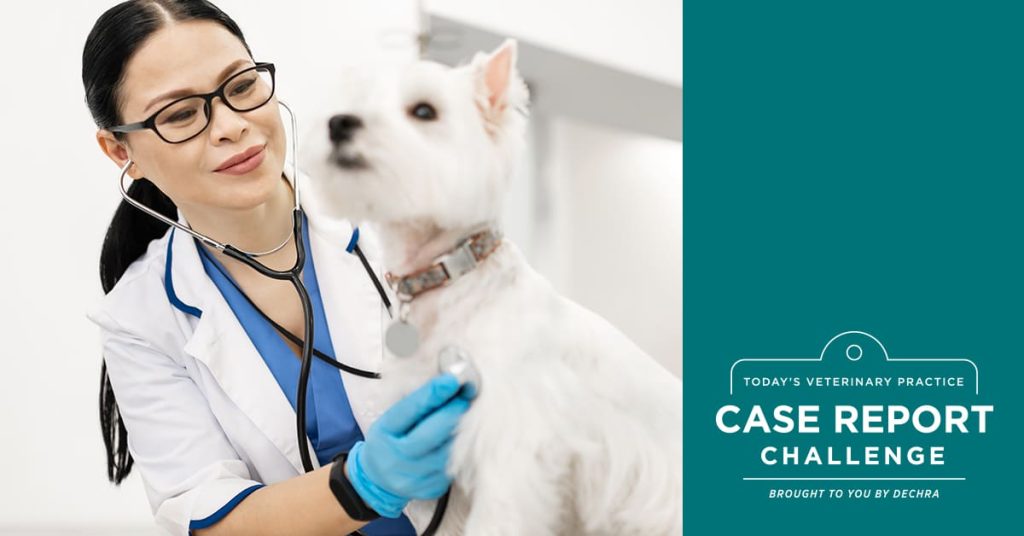[ad_1]
Summary:
Dr. Molly McAllister is a chief medical officer at Banfield Pet Hospital. Overweight dogs had a shorter lifespan in all breeds studied. Dogs and cats diagnosed as overweight or obese are more likely to suffer from other serious conditions, such as skin infections, and respiratory conditions. More than 150,000 dogs every year are diagnosed with osteoarthritis.
As a chief medical officer at Banfield Pet Hospital, Dr. Molly McAllister is responsible for ensuring strategy, talent, organization, and culture support the practice in remaining at the forefront of quality pet care, as well as cultivating productive relationships within the veterinary profession. Dr. McAllister earned her veterinary degree from the Oregon State University College of Veterinary Medicine and a master’s in public health from the University of Minnesota. She started her career in private veterinary practice before joining Royal Canin as a scientific services veterinarian, responsible for educating veterinarians about nutritional solutions to clinical diseases. In 2012, she joined Banfield to lead medical education programs before transitioning to oversee the Veterinary Science team and drive research from Banfield’s extensive electronic medical records database.
With the American Pet Products Association (APPA) estimating more than 11 million households welcomed a new pet last year, the veterinary profession faced complex challenges in 2020: adjusting to new pandemic processes and guidelines while simultaneously meeting the surging demand for pet care services. With families spending more quality time at home with their cats and dogs than ever before, we also saw a shift in how people were approaching pet ownership.
A Much Weightier Issue than Just the “COVID 15”
The human-animal bond has never been stronger. This has led to national discussions about the potential longer-term impacts quarantine might have on our pets – from worries of separation anxiety to noticing extra pounds on cats and dogs. A new report based on data from Banfield Pet Hospital’s electronic veterinary health records system confirms suspicions of weightier pets over the past year. When looking at data from March 2020 to December 2020, dogs diagnosed as overweight or obese rose 2.3%, the largest increase in overweight/obese canines seen at Banfield in the past 10 years.
A wider look at our data shines a spotlight on an even more concerning reality that many of us in the profession have been trying to tackle for years: diagnoses of overweight and obesity in cats and dogs have been occurring in epidemic proportions since long before the pandemic. Analyzing the health records of millions of pets seen at our practice each year, over the past decade Banfield saw a 108% increase in the percentage of dogs diagnosed as overweight or obese, jumping from 16% in 2011 to 34% in 2020. The increase seen in cats was even greater: 114%, jumping from 18% in 2011 to 38% in 2020.
It’s More than Just Extra Pounds
A previous study published by the Waltham Petcare Science Institute – the fundamental science center for Mars Petcare – using Banfield data demonstrated significant differences in lifespan between dogs of normal weight and overweight dogs. Overweight dogs had a shorter lifespan in all breeds studied. The difference varied between breeds and ranged between five months and two years.
In addition to reducing lifespan, we know that dogs and cats diagnosed as overweight or obese are more likely to suffer from other serious conditions, particularly skin infections and respiratory conditions. Not surprisingly, overweight dogs were over 3 times more likely to be diagnosed with orthopedic conditions. According to Banfield’s 2021 Veterinary Emerging Topics (VET)™ Report, more than 150,000 dogs every year are diagnosed with osteoarthritis (OA), with weight being a key factor.
Better Understanding Barriers for Pet Owners
With the problem of overweight and obesity only continuing to rise, we, as a profession, need to continue to try new ways to have productive discussions with owners when their pet’s weight is a concern while establishing strong partnerships that create effective solutions. We know that there are a number of factors contributing to pets being overweight and their success in losing it, and they aren’t the same for every pet, so creating a personalized approach is key.
Banfield surveyed 1,000 U.S. owners with pets that have been diagnosed by a veterinarian as, or who consider their pets to be, overweight or obese. Concerningly, 93% of respondents said they have faced hurdles in maintaining a healthy weight for their pet, including:
- Giving in when pets beg for food or treats (46%)
- Not knowing the best strategies for weight loss (30%)
- Trouble exercising their pet due to their own health or mobility issues (29%) and not having enough time for exercise (26%)
- Not paying enough attention to their pet’s diet (23%)
Insights from Mars Petcare and Royal Canin Experts
Angela Hughes, senior manager, and veterinary geneticist at Mars Petcare:
A better understanding of a pet’s life at home is a starting point, but there are many other factors that need to be discussed to determine the appropriate weight-loss plan for an overweight pet. One key factor that’s oftentimes overlooked is the role genetics can play in a pet’s appetite and risk of obesity. For example, a variant in the pro-opiomelanocortin (POMC) gene is known to help regulate a dog’s appetite and has been associated with increased body weight and food motivation which can lead to obesity. Dogs that carry this variant will likely require a specially designed diet and exercise program to maintain a healthy weight. Thus, it is important to consider each pet’s individual genetic background and how that can impact their metabolism, appetite, and ideal body weight when working with clients to achieve successful weight loss.
Tanya Schoeman, scientific support at Royal Canin:
Another important element of a pet’s weight loss journey is nutrition. We often find pet owners don’t realize when they’re overfeeding their pet, or that there are formulas out there specifically designed to help their dog or cat reach its ideal weight. In fact, 27% of pet owners in Banfield’s survey said they don’t know the appropriate amount to feed their pets.
A weight loss diet for a pet focuses on three general principles: reducing the number of calories they ingest, managing the feeling of hunger during the diet, and adapting the number of essential nutrients to balance the whole formula. This helps ensure a pet is properly fed with a balanced diet, feels full and satiated, and significantly reduces the level of energy provided. Just feeding less of their regular food is not an effective way of facilitating weight loss. In some cases, it can even be hazardous to the pet, since this will result in the pet missing out on essential nutrients.
The recent, most advanced veterinary diets feature specific fiber blends and precise formulas to help maintain the feeling of satiation in the pet, and therefore reduce the chances of begging, for a more successful weight-loss program. It’s about inspiring pet owners to adopt healthy habits from the start and arming pet owners with the knowledge and nutrition they need to solve weight problems before and after they occur.
We as a profession have an opportunity to continue to raise awareness about this serious issue impacting the growing number of pets in the U.S. By leveraging data, we can provide more helpful and personalized solutions for pets and their owners. It’s about helping people understand that even small adjustments at home can have long-term impacts on their pet’s health and happiness – and we as veterinary professionals are here to support them along the way.
[ad_2]


